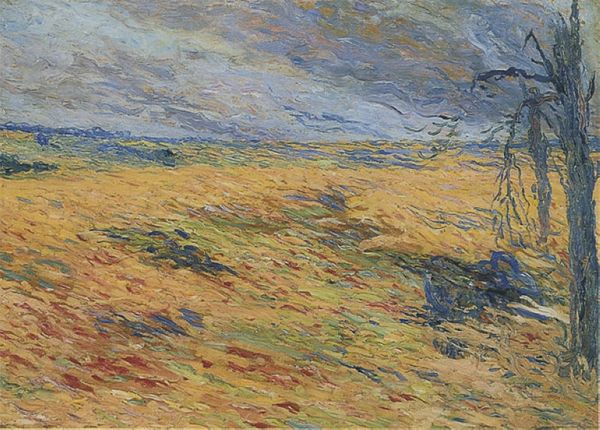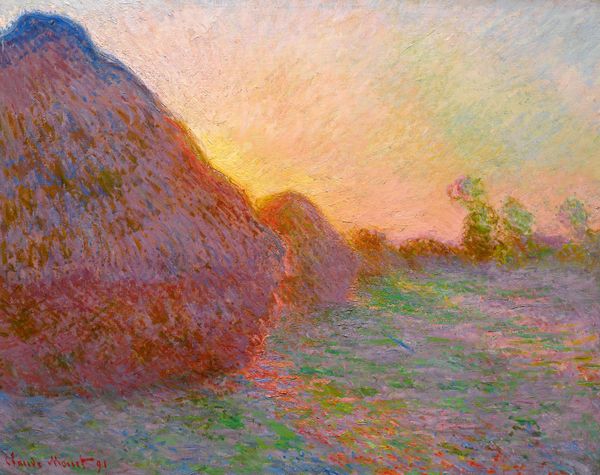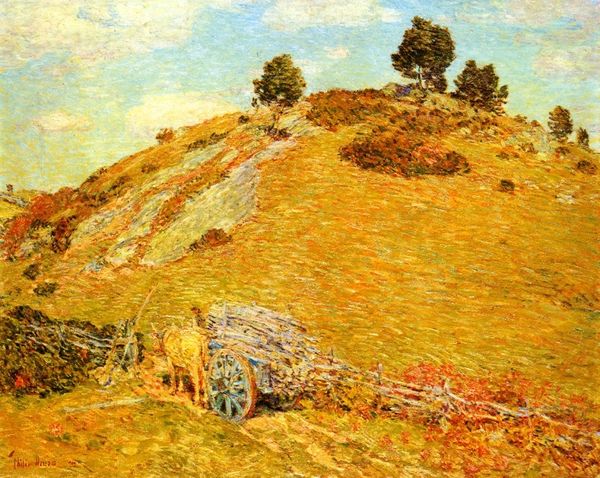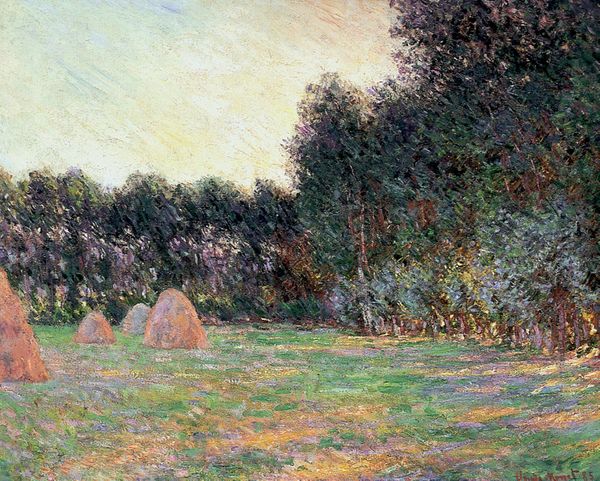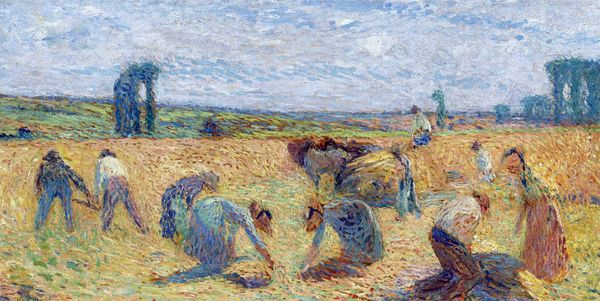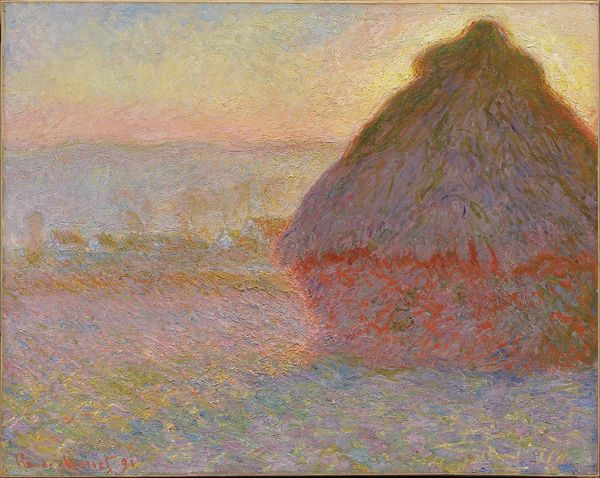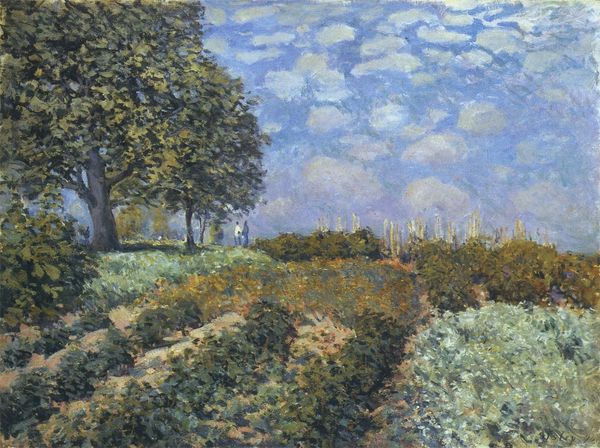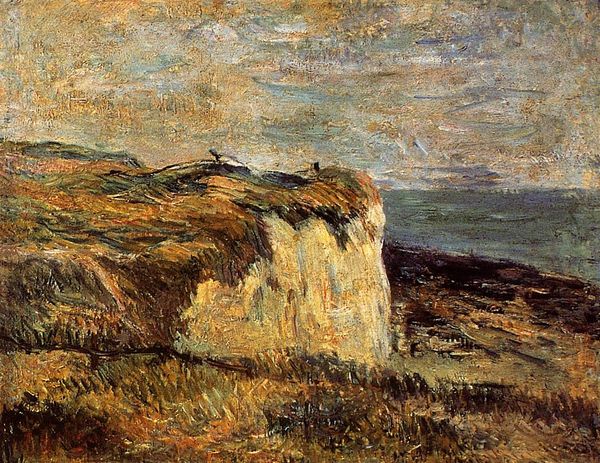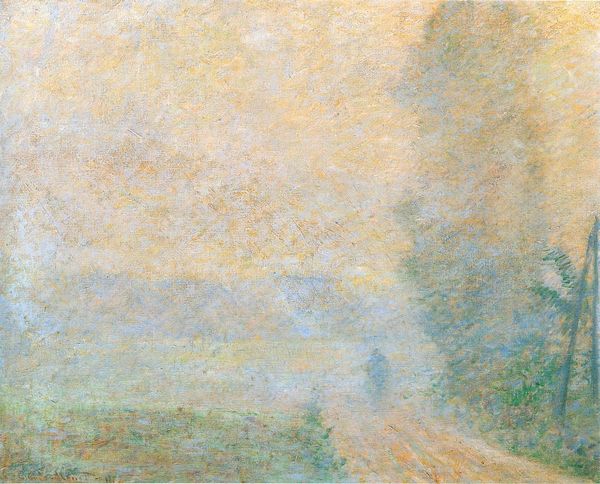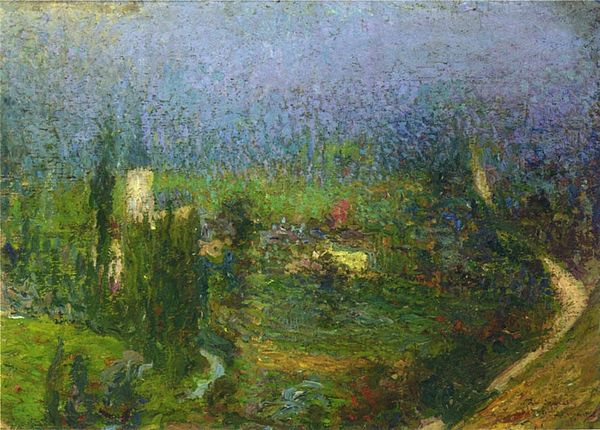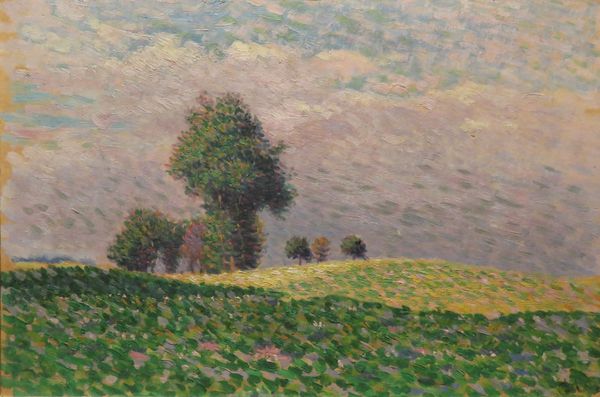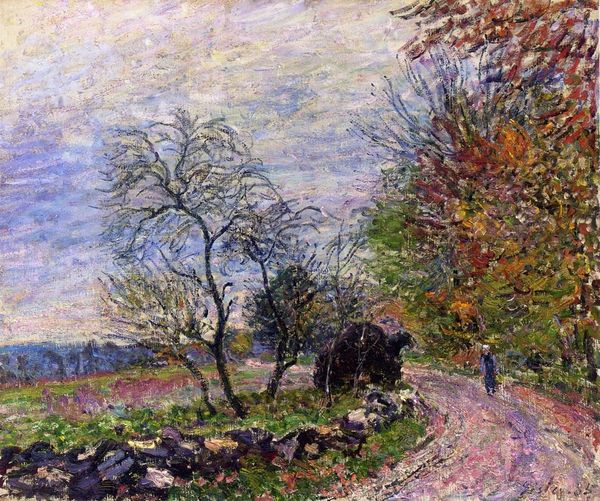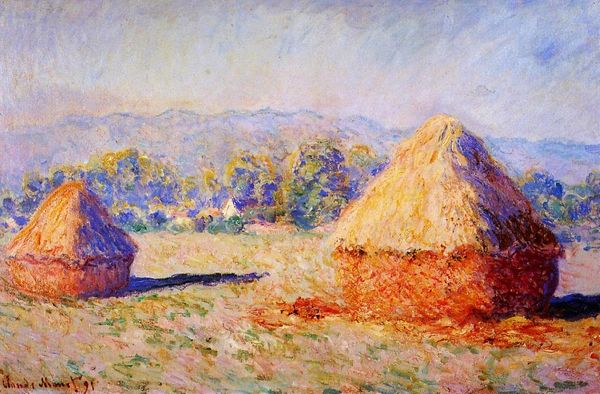
Dimensions: 81 x 65 cm
Copyright: Public domain
Editor: We're looking at "Cliffs at Grainval," an oil painting by Gustave Loiseau from 1902. It’s an Impressionist landscape, and what strikes me is how much of the composition is dominated by a golden haystack. It feels like we're standing right next to it. What’s your interpretation of this work? Curator: It's tempting to just appreciate the pretty colors and the texture, but to really *see* this, we have to consider what Loiseau, and the Impressionists in general, were doing. The late 19th and early 20th centuries were times of massive social upheaval, right? The rise of industrialization meant huge changes in the countryside. Why do you think artists might choose rural scenes? Editor: Maybe to preserve a sense of what was being lost? To capture a lifestyle before it disappeared completely? Curator: Exactly! And think about the market. Who were buying these paintings? Increasingly, it was the new urban middle class, people nostalgic for a rural past that they maybe romanticized. The 'plein-air' approach makes this explicit: Loiseau wasn’t just painting a landscape, he was engaging in a specific set of practices tied to ideas about nature and labor. Editor: So the painting is doing more than just showing us a haystack. It’s hinting at social and economic shifts. Curator: Precisely. Even the seemingly simple act of choosing to paint a haystack in this style reflects a complex dialogue between art, audience, and the anxieties of a changing world. What do you think that awareness adds to how we experience the painting? Editor: It makes it less about pure aesthetic pleasure and more about considering the historical moment it came from. I'll definitely look at Impressionism differently now.
Comments
No comments
Be the first to comment and join the conversation on the ultimate creative platform.
